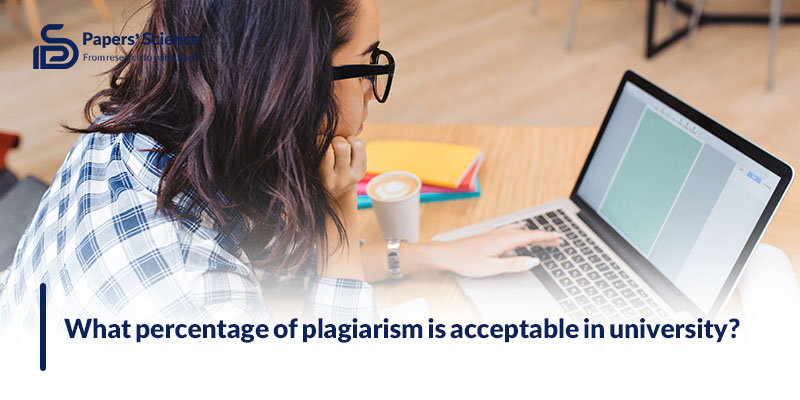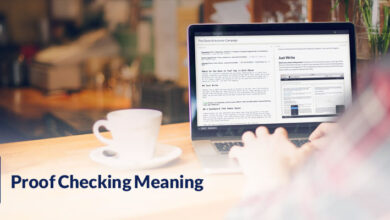What percentage of plagiarism is acceptable in university?

Plagiarism is stealing someone’s ideas, thoughts, or content and incorporating them into your article.
When it comes to academic institutions such as universities, students face stricter rules and should be cautious, using plagiarism checkers to avoid the negative effects of plagiarism.
By checking your content with plagiarism detection software, you can determine the plagiarism percentage in your paper.
These percentages can range from zero to 100%, but what plagiarism percentage is acceptable in a university?
You can join us in this article to find a written answer.
The acceptable percentage of plagiarism in universities
Universities and all academic institutes set different rules in terms of plagiarism. While some universities consider 10-15% of plagiarism acceptable, others only accept papers with 0% of plagiarism.
So, there are many rules for all academic institutes. Before freaking out with the plagiarism percentage of your text, you can check the university’s website and see the rules.
You don’t need to revise your work if it has under 10% of plagiarism.
But consider this all similarities in students’ work are not plagiarism. Universities use Turnitin online tools to detect plagiarism content. To know what it is, follow us in the next section.
What is the Turnitin tool?

Turnitin is an online tool installed on computers and smartphones that detects plagiarism in documents and shows what percentage of text is similar to previous documents.
With the help of this tool, you can recognize sources used for creating content; there, you will be given feedback about your text.
Read More: What does plagiarism software detect
How to avoid plagiarism & its negative consequences?

Here are tips that can help you to make unique content free of plagiarism:
- Avoid paraphrasing
When you read resources to get information for your content, stop rewriting and paraphrasing the text and its thoughts. Instead, read different resources focused on the same topic, grasp the point, and write it in your way. - Cite resources
You should add a citation to avoid plagiarism when you mention an idea or words from another author. To add citations, you must include the author’s full name, the publishing date, and other details required by the university paper guide. - Input your thoughts
Given that you are the article’s main author, it should be included with your perspective and ideas to let the reader know what your goal is in saying this. Why do you think it is important to academic institutes?
But if you have published other papers, be cautious not to recycle your thought in the previous articles, which is one of the plagiarism items called self-plagiarism.
Another factor you must consider is reading university guidelines to incorporate your perspective into the paper.
- Using quotations
This is one of the best ways to avoid plagiarism when you input the same words from a paper in yours. Once you put the same words in quotations mark, the detector will not consider your text plagiarism.
In addition to adding quotations, you must cite the resource, allowing the reader to know the origin of this text.
- Use multiple resources
When you want to start writing on a topic, relying on a single resource causes some issues.
Besides needing more information for creating content, you can create content similar to a single resource.
Your thought will not go beyond its structure, and you will be limited to one resource. Therefore, it is more likely that your content is considered plagiarism.
But when you use various resources and see how they cover the topic and what is the best one to convey your message, you get the point and start creating your content without plagiarizing.
- Using plagiarism detector
Even if you don’t intentionally don’t incorporate a part of the text in your writing, it is more likely that your text is detected by 10-20% of plagiarism because of some phrases or missing quotations mark, or adding citations.
When you check your text with a plagiarism detector, you will decrease the risk of potential effects.
Checking content in terms of plagiarism, you can revise your text before going to trouble.
Let’s recap
Plagiarism is not welcomed y any organization, especially at the academic level, and because of that, many plagiarism detectors are used by these to check the content.
Depending on the origination and their rule, the plagiarism rate can vary, and for some organizations, plagiarism under 20% is acceptable. But when it comes to academic institutions, it can be different.
In this article, we answer the question of what percentage of plagiarism is acceptable in university, and we said there is no single answer.
Reading this article helps you avoid plagiarism in your paper and develop a unique article.
Do you know another tip for avoiding plagiarism? If yes, share it with us in the comment section.

What are your thoughts on plagiarism in universities? Share your experiences and opinions in the comments below.



